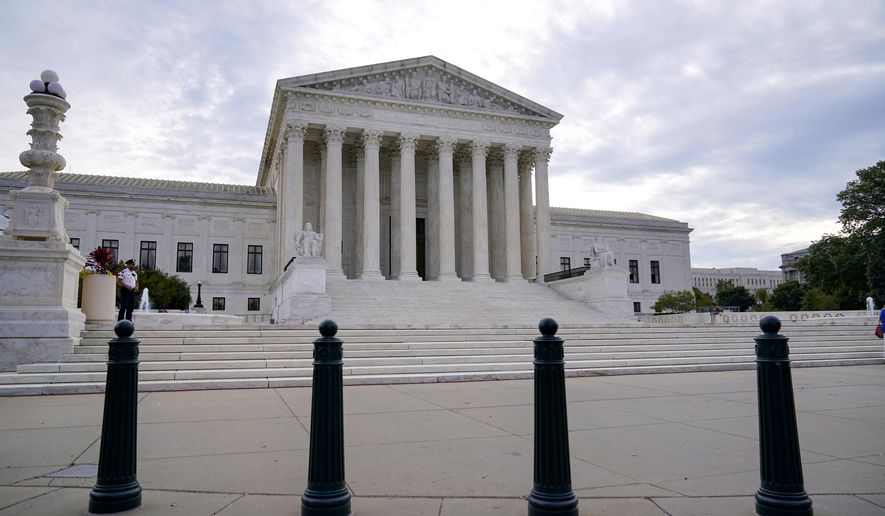Members of President Biden’s Commission on the Supreme Court divided Friday over its draft report about how — or if — to pack the high court.
The lengthy hearing was the fourth public meeting the group has held since it was formed by executive order in April.
Some commissioners thought the draft report released Thursday, which they described as discussion material, went too far to leave open the possibility of a court-packing scheme. Others thought the draft dismissed several viable ideas for how to add justices to the high court.
Most of them, though, thought it came off partisan, recognizing the political passion from Republicans and Democrats on the issue.
“We need to be really careful here about the way we describe arguments and the way we frame them. This has real consequences,” said Thomas Griffith, one of the commission’s members. “Too much of this discussion draft reinforces the assumptions of many that the justices are partisans just looking for ways to advance the policy agendas of the presidents who appointed them.”
The group is scheduled to deliver a final report to Mr. Biden by mid-November. The report is expected to detail the pros and cons of various proposals to alter the makeup of the Supreme Court.
The documents released Thursday did not suggest one course of action, but it did note packing the court would be legal and that there’s precedent for it.
The commission also caution that political backlash could ensue if justices were added and warned it could lead to increasingly partisan confirmation hearings.
The commission’s draft paperwork was more enthusiastic about term limits for justices, saying it would enjoy more bipartisan support in Congress, which would have to approve such proposals. Members of Congress are divided on whether term limits would be constitutional.
The last president to try to add justices to the high court was Franklin D. Roosevelt in 1937, but even the overwhelmingly Democratic Congress opposed the move.
The high court has had nine justices since 1869. Before that, it fluctuated from five to 10 justices.
The Constitution does not set the number of justices for the high court, but any expansion would have to go through Congress.
Given the 50-50 party-line split in the Senate and a 60-vote threshold to pass most legislation, it’s unlikely any bill to add justices would pass.
Justices, under the U.S. Constitution, are appointed for life.
The panel, composed of both liberal and moderate members, was created amid recent calls from progressives to pack the Supreme Court, stemming from anger that conservatives hold a 6-3 majority on the bench after Justice Ruth Bader Ginsburg’s death last year.
Progressives grew increasingly angry over the Supreme Court during former President Donald Trump’s four years in office, during which he had three appointments.
The proposed changes come as the Supreme Court recently hit its lowest approval rating among registered voters in a Quinnipiac University poll published last month.
Fifty percent of registered voters gave the high court a negative approval rating, while 37% approved of the job the justices are doing. Thirteen percent did not offer an opinion.
It’s the lowest job approval the high court has received since Quinnipiac University began questioning people about the Supreme Court’s job in 2004.
• Alex Swoyer can be reached at aswoyer@washingtontimes.com.




Please read our comment policy before commenting.